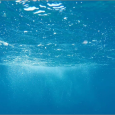For me, we’re a family. Meadowlark Hills is home.
HOGtoberfest: 12th Annual Event Boosts Good Samaritan Fund
November 13, 2025
Local not-for-profit focused on supporting people in living their best lives

“You make a gift. We make it grow.”
These two sentences, long associated with Grow Green Match Day, could have special meaning for Meadowlark Foundation’s Match Day donors. Not only do Grow Green contributions grow in value because of a 50% match, but also Grow Green donations “grow” opportunities for Meadowlark employees and “grow” the pool of talented nurses who care for Meadowlark residents.

Most of us are aware of the notion that a pebble dropped into the ocean will, via a cascade of interconnected mechanisms, eventually affect the entire ocean. Sounds far-fetched, but the idea holds more truth than most people wish to accept.
For me, we’re a family. Meadowlark Hills is home.
2121 Meadowlark Road
Manhattan, KS 66502
Directions & Map
Call: 785.537.4610
Email: info@meadowlark.org
November 13, 2025
October 3, 2025
October 2, 2025
December 16, 2025
December 19, 2025
